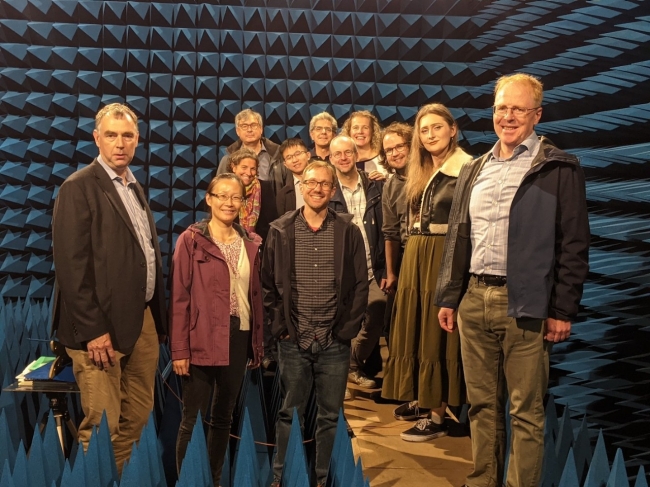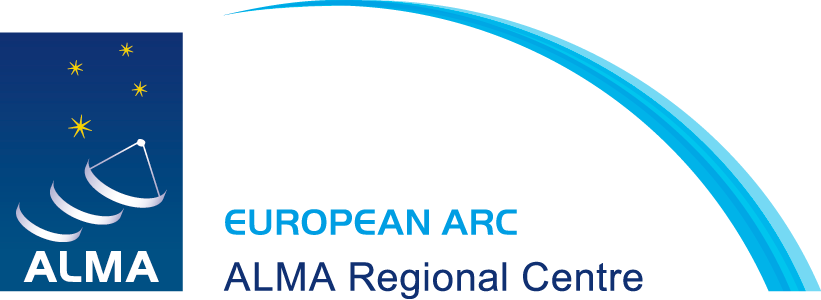On September 25th, 2023, representatives of the ESO ALMA development study program and the European Science Advisory Committee (ESAC) met at the University of Manchester (UoM) with researchers from both UoM's Advanced Radio Instrumentation Group and the Science and Technology Facilities Council's Rutherford Appleton Laboratory (RAL), kicking off a key ALMA study aiming to provide more integrated and scalable approaches to building the low noise amplifiers and mixers at the heart of ALMA receivers.
Development study on integrated system on a chip low noise amplifiers kicks off

The participants of the kick-off meeting inside the anechoic chamber at the University of Manchester's low noise lab.
Over the course of the next two years, the team involved will work together to extend monolithic microwave integrated circuits --- the technology used in the lower frequency ALMA Bands 1 and 2 --- to higher frequencies, namely to the 125-211 GHz range now covered by Bands 4 and 5. By integrating the amplifier and mixer at the package level, and eventually the chip level, the group aims to improve the sensitivity and bandwidth of the ALMA receivers and will enable the components to occupy a smaller footprint. This will benefit traditional single-beam receivers like those now used by ALMA, but could also allow the design to scale modularly and be used in multi-beam focal plane arrays, which would improve the widefield mapping speed of ALMA. The team, led by Danielle George at UoM, combines the talents of both UoM and RAL's Millimetre Wave Technology Group staff for the design, fabrication, assembly, and testing of prototype devices. These will be crucial for upgrades in the near future to exploit the bandwidth delivered by the ALMA Wideband Sensitivity Upgrade (WSU). The technical advances proposed not only support ALMA, but could also be exploited in support of quantum computing, Earth observation, planetary sounding meteorological science, and in wider applications such as telecommunications. Placing ALMA and Europe at the forefront of this technology is therefore also an objective for this project.

